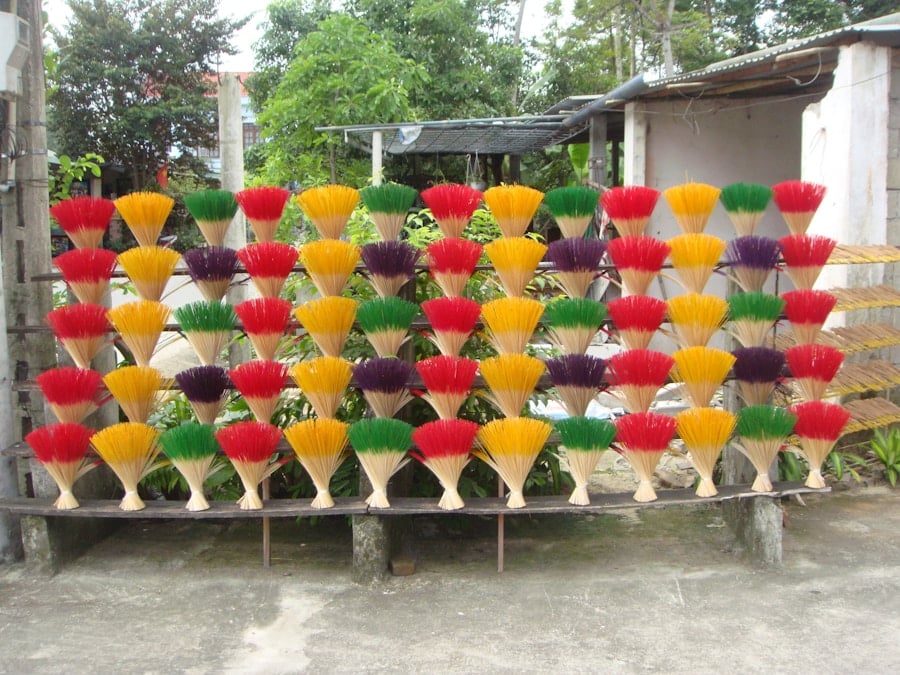Fertilizers are essential for promoting healthy plant growth, particularly in vegetable gardening, where nutrient demands can be high. At their core, fertilizers are substances that supply essential nutrients to plants, enabling them to thrive and produce bountiful yields. The primary nutrients found in fertilizers are nitrogen (N), phosphorus (P), and potassium (K), often referred to as N-P-K.
In addition to these macronutrients, fertilizers may also contain secondary nutrients such as calcium, magnesium, and sulfur, as well as micronutrients like iron, manganese, and zinc. These elements are required in smaller quantities but are equally important for the overall health of the plant.
Understanding the specific nutrient requirements of different vegetable crops is fundamental for gardeners aiming to optimize their growth and productivity. Soil testing can provide valuable insights into existing nutrient levels, allowing gardeners to tailor their fertilizer choices accordingly. Check out the latest fertilizers for your garden at Soil Compost.
Key Takeaways
- Understanding the Basics of Fertilizer:
- Fertilizer provides essential nutrients for plant growth, including nitrogen, phosphorus, and potassium.
- Different plants have different fertilizer needs, so it’s important to understand the specific requirements of your vegetables.
- Choosing the Right Fertilizer for Your Vegetables:
- Consider the N-P-K ratio on the fertilizer label to ensure it matches the needs of your vegetables.
- Organic fertilizers are a great option for sustainable gardening, while synthetic fertilizers provide a quick nutrient boost.
- Creating a Fertilizer Schedule:
- Develop a schedule based on the specific needs of your vegetables, taking into account their growth stages and the time of year.
- Regular soil testing can help determine the nutrient levels and adjust the fertilizer schedule accordingly.
- Applying Fertilizer Properly:
- Follow the instructions on the fertilizer label for the correct application rates and methods to avoid over-fertilization.
- Water the plants after applying fertilizer to help the nutrients reach the roots.
- Organic vs. Synthetic Fertilizers:
- Organic fertilizers improve soil health and microbial activity, while synthetic fertilizers provide a quick nutrient release.
- Consider the long-term impact on the environment and soil health when choosing between organic and synthetic fertilizers.
- Understanding Nutrient Deficiencies:
- Learn to recognize the symptoms of common nutrient deficiencies, such as yellowing leaves or stunted growth.
- Address nutrient deficiencies promptly by adjusting the fertilizer schedule or using targeted nutrient supplements.
- Troubleshooting Common Fertilizer Issues:
- Monitor for signs of over-fertilization, such as leaf burn or excessive foliage growth.
- Adjust the fertilizer application as needed to prevent nutrient imbalances and plant stress.
- Tips for Maximizing Fertilizer Efficiency:
- Use slow-release fertilizers to provide a steady nutrient supply over time.
- Incorporate organic matter into the soil to improve nutrient retention and reduce the need for frequent fertilization.
Choosing the Right Fertilizer for Your Vegetables
Nutrient Requirements for Different Vegetables
For instance, leafy greens such as lettuce and spinach benefit from fertilizers high in nitrogen to promote lush foliage, while root vegetables like carrots and potatoes require a balanced approach with adequate phosphorus to support root development.
Forms of Fertilizers>
When choosing a fertilizer, gardeners should also consider the form of the fertilizer—whether it is granular, liquid, or slow-release. Granular fertilizers are often easier to apply and can provide a steady release of nutrients over time, making them suitable for long-term feeding. Liquid fertilizers, on the other hand, can deliver nutrients quickly and are ideal for addressing immediate deficiencies or providing a boost during critical growth phases.
Slow-Release Fertilizers for Busy Gardeners
Additionally, slow-release fertilizers can be particularly beneficial for busy gardeners who may not have time for frequent applications, as they gradually release nutrients over an extended period.
Creating a Fertilizer Schedule

Establishing a fertilizer schedule is crucial for ensuring that your vegetables receive the nutrients they need at the right times throughout their growth cycle. A well-planned schedule takes into account the specific growth stages of the plants, from seedling to maturity. For example, during the early stages of growth, when seedlings are establishing their roots, a fertilizer with a higher nitrogen content may be beneficial to promote vigorous leaf development.
As plants transition into their flowering and fruiting stages, the nutrient requirements shift. At this point, incorporating fertilizers with higher phosphorus and potassium levels can enhance flower production and fruit set. Gardeners should also consider seasonal factors; for instance, applying fertilizers in early spring as plants begin to emerge can set the stage for robust growth throughout the growing season.
Regular monitoring of plant health and soil conditions can help adjust the schedule as needed, ensuring that nutrient availability aligns with plant demands.
Applying Fertilizer Properly
| Metrics | Value |
|---|---|
| Amount of Fertilizer Used | 200 kg/ha |
| Application Method | Broadcasting |
| Application Timing | Early morning or late afternoon |
| Uniformity of Application | 90% |
Proper application of fertilizer is critical to maximizing its effectiveness and minimizing potential negative impacts on the environment. The method of application can vary based on the type of fertilizer used and the specific needs of the plants. For granular fertilizers, broadcasting them evenly over the soil surface before planting or during early growth stages is common practice.
It is essential to follow package instructions regarding application rates to avoid over-fertilization, which can lead to nutrient runoff and harm local ecosystems. For liquid fertilizers, dilution according to manufacturer guidelines is necessary before application. This type of fertilizer can be applied directly to the soil or as a foliar spray, allowing plants to absorb nutrients through their leaves.
Timing is also crucial; applying fertilizer during cooler parts of the day can reduce evaporation losses and enhance nutrient uptake. Additionally, incorporating fertilizers into the soil rather than leaving them on the surface can improve nutrient availability by reducing leaching and promoting better root access.
The debate between organic and synthetic fertilizers is a significant consideration for many gardeners. Organic fertilizers are derived from natural sources such as compost, manure, bone meal, and fish emulsion. They not only provide essential nutrients but also improve soil structure and promote beneficial microbial activity.
Organic fertilizers tend to release nutrients more slowly than synthetic options, which can lead to more sustainable plant growth over time. Conversely, synthetic fertilizers are chemically manufactured and often contain concentrated forms of nutrients that can be quickly absorbed by plants. While they can provide immediate results in terms of plant growth and yield, there are concerns regarding their long-term impact on soil health and environmental sustainability.
Over-reliance on synthetic fertilizers can lead to soil degradation and increased dependency on chemical inputs. Gardeners must weigh these factors when deciding which type of fertilizer aligns best with their gardening philosophy and goals.
Understanding Nutrient Deficiencies
Recognizing nutrient deficiencies in vegetable plants is vital for maintaining optimal health and productivity. Symptoms of deficiencies can vary widely depending on the specific nutrient lacking. For example, nitrogen deficiency often manifests as yellowing leaves (chlorosis) starting from the older leaves and progressing upward, while phosphorus deficiency may cause stunted growth and dark green or purplish foliage due to poor root development.
Potassium deficiency typically results in browning leaf edges and increased susceptibility to diseases. Micronutrient deficiencies can also present unique symptoms; for instance, iron deficiency leads to interveinal chlorosis where leaf veins remain green while surrounding tissue turns yellow. Regular observation of plant health and growth patterns can help gardeners identify these issues early on.
Soil testing can further clarify which nutrients may be lacking, allowing for targeted interventions through appropriate fertilization strategies.
Troubleshooting Common Fertilizer Issues

Despite careful planning and application, gardeners may encounter various issues related to fertilizer use that can hinder plant growth. One common problem is over-fertilization, which can lead to nutrient burn characterized by brown leaf tips and stunted growth. This situation often arises from applying too much fertilizer or using a product with an inappropriate nutrient ratio for specific plants.
To mitigate this issue, it is essential to adhere strictly to recommended application rates and consider conducting soil tests before fertilizing. Another challenge is nutrient leaching, particularly in sandy soils or during heavy rainfall events when soluble nutrients wash away from the root zone before plants can absorb them. To combat this problem, gardeners can employ practices such as mulching to retain moisture and reduce runoff or using slow-release fertilizers that provide a more consistent supply of nutrients over time.
Additionally, incorporating organic matter into the soil can enhance its structure and nutrient-holding capacity, further reducing the risk of leaching.
Tips for Maximizing Fertilizer Efficiency
To maximize fertilizer efficiency in vegetable gardening, several best practices can be implemented that enhance nutrient uptake while minimizing waste. First and foremost is timing; applying fertilizers when plants are actively growing—typically during warm weather—ensures that nutrients are readily absorbed rather than lost through evaporation or runoff. Additionally, synchronizing fertilizer applications with watering schedules can improve nutrient availability since moist soil enhances nutrient solubility.
Another effective strategy is to use companion planting techniques that pair nutrient-demanding crops with those that naturally enrich the soil or require fewer resources. For example, planting legumes alongside heavy feeders like corn can help fix atmospheric nitrogen in the soil through symbiotic relationships with nitrogen-fixing bacteria. Furthermore, regular soil testing allows gardeners to adjust their fertilization practices based on current nutrient levels rather than relying solely on general recommendations.
Incorporating these practices not only promotes healthier vegetable crops but also contributes to sustainable gardening by reducing reliance on chemical inputs and enhancing soil health over time. By understanding the intricacies of fertilizer use—from selection to application—gardeners can cultivate thriving vegetable gardens that yield abundant harvests while maintaining ecological balance.
If you are looking to improve the health and yield of your vegetable garden, it is essential to understand the proper use of fertilizer. A helpful resource to consult is a chart that outlines the best fertilizers for different types of vegetables. For more information on how to effectively repot aloe plants, check out this article. Additionally, if you are dealing with common diseases affecting your Meyer lemon tree or tomato plants, be sure to read up on the signs and solutions provided in these articles: Common Meyer Lemon Diseases: Signs and Solutions and Common Tomato Diseases: Identify and Treat Problems. By staying informed and proactive, you can ensure a thriving vegetable garden.
FAQs
What is a fertilizer for vegetable garden chart?
A fertilizer for vegetable garden chart is a visual guide that provides information on the types of fertilizers to use for different types of vegetables, the recommended application rates, and the timing of fertilizer application throughout the growing season.
Why is a fertilizer for vegetable garden chart important?
A fertilizer for vegetable garden chart is important because it helps gardeners make informed decisions about the types and amounts of fertilizers to use for their specific vegetable crops. It can also help prevent over-fertilization, which can lead to nutrient imbalances and environmental pollution.
What information can be found on a fertilizer for vegetable garden chart?
A fertilizer for vegetable garden chart typically includes information on the types of fertilizers (such as organic or synthetic), the nutrient content (N-P-K ratio), the application rates, and the timing of fertilizer application for various vegetables.
How can a fertilizer for vegetable garden chart help improve vegetable garden yields?
By following the recommendations on a fertilizer for vegetable garden chart, gardeners can ensure that their vegetable plants receive the proper nutrients at the right times, which can lead to healthier plants, increased yields, and better quality vegetables.
Where can I find a fertilizer for vegetable garden chart?
Fertilizer for vegetable garden charts can be found in gardening books, online gardening resources, and from agricultural extension offices. Some fertilizer manufacturers also provide charts specific to their products.

